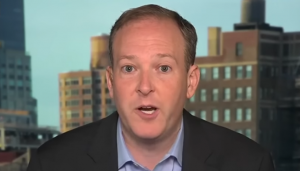The accelerated pace of outflow of foreign investments, along with elevated crude oil and commodity prices, could pose a downward pressure on the rupee. In August, the rupee depreciated to an all-time low of 80.15 a dollar. The currency has depreciated by 7.65% against the dollar, so far, in this calendar year.
The downward trend in the Indian rupee is not out of sync with other emerging economies’ currencies.
Also Read | Where to invest during high inflation?
According to economists, the Indian rupee may further decline in the near term due to the widening of the trade deficit and the aggressive interest rate hike by the US Federal Reserve to curb record-high inflation.
Also Read | Bed Bath & Beyond: The heady rise and steady fall
A widening trade deficit, owing to growth in imports outpacing exports and several other factors have already caused the rupee to weaken. Economists said the latest rate hike by the US Fed will improve yields on US treasuries and reinforce the dollar’s strength against the rupee.
“That will make the Indian financial market less attractive to foreign investors and accelerate outflows from the Indian bond and equity market. That will put further pressure on the Indian rupee,” said Ritesh Kumar Singh, an economist and assistant director in the 13th Finance Commission.
Also Read | The 2008 market crash: Inside the doomsday machine and a brief history
India’s inflation rate may accelerate as a result of the Fed rate increase. Depreciation of the rupee will increase the rupee cost of imported goods such as crude oil, chemicals and fertilizers, electronics, and active pharmaceutical ingredients. That will worsen situations on the inflation front as well as the management of fiscal deficit due to increased subsidy bills.
Also Read | Pallonji Mistry: All you need to know about Cyrus Mistry’s father
The rupee’s depreciation pressures, like those of other developing market currencies, are projected to worsen as the US Federal Reserve raises interest rates. An increase in US interest rates improves the relative returns on dollar investments, causing the US currency to gain. The dollar index, which measures the US currency against a basket of other currencies, has risen by more than 18% in the last year. As a result, with the dollar strengthening, India is likely to experience greater foreign investment outflows.
“When the US Fed hikes interest rates, capital flows more towards the US economy and takes risk assets away from emerging economies like India. And this leads to higher cost of capital, and a re-pricing of risk,” said Rishad Manekia, founder of Kairos Capital.
Also Read | What is Social Stock Exchange; how organisations can list on it?
FII outflows, along with RBI intervention, are triggering a depletion of forex reserves, putting pressure on the rupee. Furthermore, a widening trade imbalance to an all-time high, along with adverse risks to GDP, would keep the rupee under pressure. So far in 2022, the RBI has spent $82.8 billion (6.59 lakh crore rupees) from its forex reserves. It sold $10 billion in September alone. According to traders, the central bank intervened aggressively in August as well.
Also Read | How Paul Volcker tamed inflation with two recessions in 1980s
India’s forex reserves were $550.8 billion as of September 9, down from an all-time high of $642.4 billion the previous year. The rupee has lost about 6% versus the dollar this year as a result of adverse risk sentiment amid the Russia-Ukraine crisis and global monetary policy tightening.






